In an awe-inspiring display of British air and sea power, HMS Queen Elizabeth and her Carrier Strike Group have showcased their round-the-clock operational capability in a new video.
The video, posted on Twitter by the official account of the UK Carrier Strike Group, offers a rare glimpse into the intense and steadfast nature of maritime operations.
Day or night – the UK Carrier Strike Group is ready!@OC617Sqn, @820NAS & @847NAS
Check it out 👇#UKCSG23 #WeAreNATO pic.twitter.com/PMazVHMstI
— UK Carrier Strike Group (@COMUKCSG) November 8, 2023
What is the Carrier Strike Group doing?
The UK Carrier Strike Group, led by flagship HMS Queen Elizabeth, recently completed the first phase of its autumn deployment. This involved participating in a series of simulated strike missions in the North Sea and Norwegian Sea alongside international naval partners.
“HMS Queen Elizabeth and her embarked jets and helicopters have proven their ability to provide the “punch” of the UK Carrier Strike Group during a series of simulated strike missions alongside international partners”, the press release stated.
Joining the aircraft carrier for these combat simulations were several ships from the UK and allied nations. Among these were the Type 45 destroyer HMS Diamond, Royal Fleet Auxiliary tanker RFA Tideforce, Norwegian ships HNoMS Otto Sverdrup and HNoMS Maud, Dutch ships HNLMS De Zeven Provincien and HNLMS Van Amstel, and the Belgian frigate BNS Louise Marie.
The exercises featured HMS Queen Elizabeth’s F-35 Lightning fighter jets from 617 Squadron, Merlin helicopters from 820 Naval Air Squadron, and Wildcat helicopters from 815 and 847 Naval Air Squadrons. Their missions varied, ranging from defending against aerial threats to suppressing enemy air defences and executing strike attacks.
Additionally, HMS Queen Elizabeth and her Carrier Strike Group showcased their medical capabilities, including advanced resuscitation techniques, trauma surgery, and casualty evacuations.
The next phase of the deployment will feature UK forces collaborating with ships and personnel from Joint Expeditionary Force (JEF) nations, which include countries such as Denmark, Estonia, Finland, Latvia, Lithuania, the Netherlands, Norway, and Sweden.
Commodore James Blackmore, Commander of the UK Carrier Strike Group, was quoted as saying, “CSG23 is off to a great start. Integrated training within the air and maritime environments, and alongside our European allies, has demonstrated the capability and agility of UK Carrier Strike.”
“Integrated training within the air and maritime environments, and alongside our European allies, has demonstrated the capability and agility of UK Carrier Strike”, reaffirmed Blackmore.


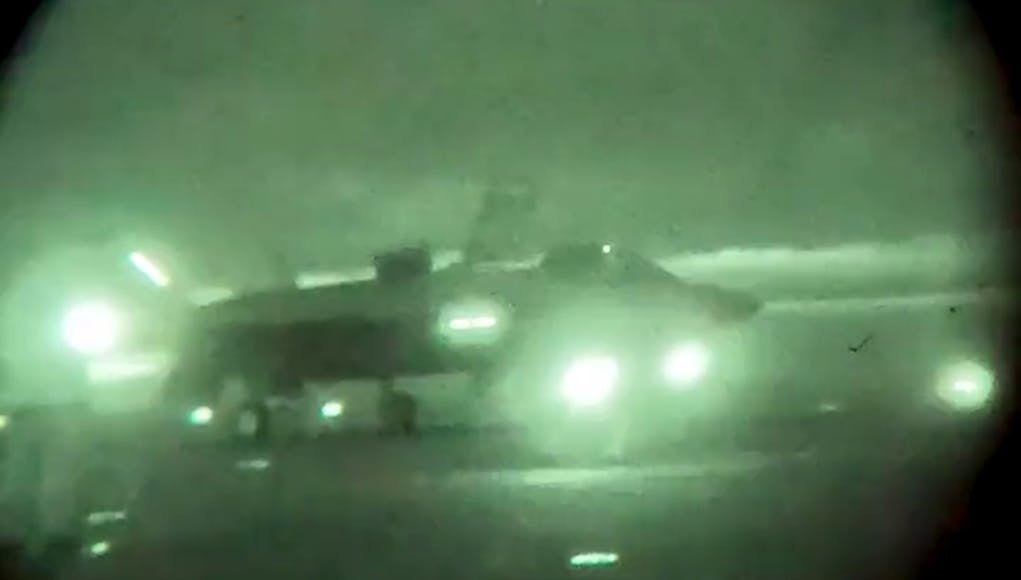
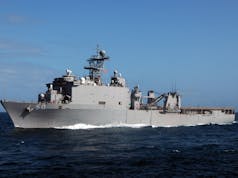
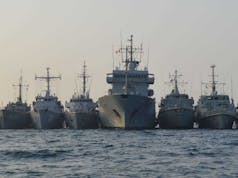
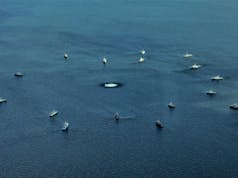
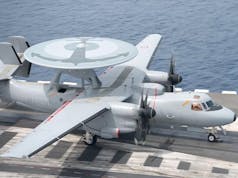
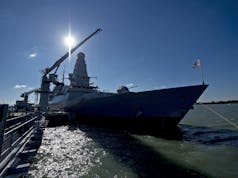
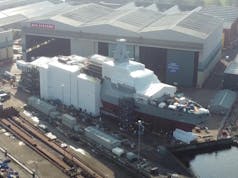
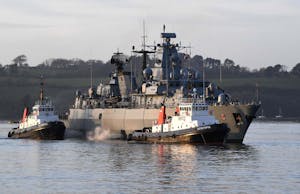









First again although I’ll appear about 15th 😂 absolutely awesome display of how first class the RN is without doubt the king of naval aviation in HMS QE . To all the shitehoose naysayers on here we have and can do what nearly everyone else can only dream about👊🏼
🏴🇬🇧
we may not have that many planes, as of yet, but these men and women sailors are working their guts of, in all weathers to be ready,
professionals at their best, and proud.
shame they are not appreciated more by those in charge.
just saying?
I don’t know how many planes are needed to optimise the sortie generation rate, which was the key metric the ships were designed around. Obviously there’s a minimum requirement for sustained operation, but I am getting a bit tired of people constantly complaining that the decks aren’t packed out with aircraft.
36 for a daily sortie total of 108. This ambition was the key factor in almost doubling the initial planned size of the carriers.
No chance of that ever happening – although i assume thats for one carrier and not the 2 (as people seems to change those goalposts at will to suit whatever arguement they are making at the time).
So 36 F35B’s then for 1 carrier – not sure when that number is scheduled- as there will never be 72 available for both?
No arguments are being changed, It’s what they were designed for. 36 or 38, that’s why it’s so big. 8 is what we have managed so far after 6 years plus the 12 USMC aircraft.
Are they not designed for helicopters as well? Why don’t you include them in your calculations?
Because I’m only talking about the actual facts and designed capacity of F35b’s which were the 38 mentioned ( or 36, or 42 depending on which source you read) Helicopter numbers and types were and remain additional options for a mixed and varied load.
We have over 70 aircraft confirmed for purchase and all will be trained and carrier capable so why don’t you think we can put 36 on the deck?
How often are we ever going to need 108 sorties a day?
These carriers a floating forward operating bases able to handle fixed wing and rotary wing aircraft and carry hundreds of soldiers.
Their not designed to sale round the world with dozens of low end 4th Gen aircraft to threaten second and third tier powers.
Mate, two carriers were designed with the specific capability to carry 36, 38, 42 or even more plus and in addition to other aircrafts and 138 F35’s was the initial number ( well 150 originally) … envisaged. What are you not getting about all that…. Do you choose to just ignore facts ?
.
Yep very true but the way things stand reaching these numbers is like flocking a dead horse 🐎 sadly 👍
It involves cancelling GCAP. I’m pretty happy to get 70 odd F35’s and get Tempest in to service.
I Agree.
I think that Tempest is part of the issue: the RAF have (belatedly) realised that supporting British industry tends to get you more investment (as the Navy have done with their ships), and seem happy to wait for the jam tomorrow and save the money on F35s (and upgraded Typhoons) for that bright future. The problem is that leaves us with insufficient combat air, without even adding the additional requirement of these carriers. The carriers are incredible. We should invest in the aircraft (F35s, Merlins, and Predator drones if the trial goes well) to truly let them fulfil their potential.… Read more »
Flocking?(?)🥴
They we designed to carry 40 aircraft, it was never specified that this would be 36 F35’s.
The carriers were always designed around the concept of operating different air groups based on different mission sets.
Google is your friend go check it out.
How does the equation break down?24 f 35 plus whatever many choppers?
There was never an aspiration to have both carriers with 36 F-35s simultaneously. The idea of having two carriers is to make sure there is always one available at reasonably short notice. There were discussions to have three carriers, two UK one French, scheduled to ensure one would always be immediately available, but that didn’t come off. There was also talk about how it might be possible for the two UK carriers to work together during war time, but only one would be kitted out as a strike carrier. The other would have maybe 8 F-35s and helicopters for amphibious… Read more »
Hi Jon – that too is my understanding – one for jet ops, one as a hybrid commando/helo carrier. Makes good sense.
In essence thats exactly why I mentioned ” which ever arguement to suit” …and is the epitome of the circular.conflated arguements regards the carriers availability and usage on here. The bottom line is either we want 2 carriers fully ‘armed’ or …we dont… 70 F35b;s in total wil not provide contingency to do both so I imagine there will only ever be 1 really available- and even that will in truth never be fully armed as far as I can see. The F35B program in relation to the carriers is in reality at bit of a damp squib-or at worst… Read more »
Exactly and actually the only real reason they were built.
I have followed the carrier story from its inception in the Labour government defence review of 1998. There was concern about a reduction from 3 Invincibles to 2 new hulls, countered by the clear ambition to build larger vessels. Once we decided to join, and part fund the F35 programme, the size of the new design grew substantially, driven as lord west explained in 2004 by the ambition to be able to fly 100+ daily sorties, this requiring@ 36 aircraft. I have never been a fan of the carrier programme, concerned above all about how much would need to be… Read more »
Great and well informed reply, thanks.
Should have developed a folding wing. F 35 that would have boosted the power of the group l
You may well be fed up with people complaining about the number of aircraft on deck but the U.S. has just sent two carriers with eighteen squadrons to the Med. Meanwhile we, after six years have two carriers at sea with eight aircraft between them. Fat chance of us ever being global Britain. For any tempted to tell me that everything will be alright in five or ten years time please don’t bother because like Ian I’m tired of it.😏
Why would we send the carriers out with every single aircraft we own? It makes no sense to do so.
Other aircraft will be in maintenance or being used for training other pilots which is just as important as doing at sea based exercises.
We can’t, there are still not enough for one let alone both…. That’s the whole issue.
Clearly so we can measure the length of our man hood against the USA and reminisce about the days of empire 😀
Your answers get stupider every time.
Or funnier 😜
No, just stupider.😏
There is a stated goal of putting 24 UK fighters on the carrier for CSG ’25, about 18 months from now. To achieve that will take a massive amount of training, not just of the pilots, also the 500 or so aircrew needed to support the fixed-wing contingent alone. Whatever plan is mapped out to reach that will require planes and trainers to be prioritised for the training programme. While it would be nice for everyone to be already trained and getting in some ship time, that’s clearly not the current situation, and if that means we can only afford… Read more »
So, as I have said many times, down the road, if we have the planes, if the crews are trained, if we have the budget….IF is the order of the day with UK defence.
Know that feeling 🙄
Sqns of 1970s designed F18’s that would be sat on deck while our F35B’s would be taking part in the first night of war sorties against advanced integrated air defence systems. The most advanced and capable fighters mankind has produced. 8,12,16, 20, whatever the max number we could deploy now in late 2023 is enough to make a massive difference to the battle space in any conflict, paving the way for those F18’s and other 4th gen aircraft that wouldn’t be taking part on night 1. The F35 fleet is growing. The French don’t have 5th gen stealth capability. They… Read more »
Join the club!!!
I’d. Be impressed to see a full surge exercise held where we can see if they do what’s on the tin and generate a 24 hour sortie rate.to the expected numbers
But when you compare 1 F35B to a Harrier its far more capable, the load for the F35 is double as one comparison.
The F35B can carry three times the ordnance of Sea Harrier
it can still only be in one place at a time though.
But the whole point of this discussion basically boils down to, Why build two large carriers capable (as designed) of carrying and operating at least 36 F35b’s in addition to other aircraft (as planned) if all we have now is excuses and comparisons to long gone assets ? Seems to me we all bemoan the lack of “everything” yet condone the lack of F35’s. Why is that…. why bemoan the lack of Escorts, Merlins, Subs, Tanks, Wedgies, C130s, Army personnel ,ASM’s in fact virtually everything yet for some reason, we seem to be happy with this carrier situation….. It’s beyond… Read more »
Don’t worry by 2027 both carriers will be gone imo. It solves a lot of problems once they’re gone. Firstly we don’t need escorts so frees up a huge part of the fleet. We can buy the F35A which is cheaper so we can buy more. Lastly people can stopping moaning about how rubbish they are. However the carrier situation, if it does stay, is a rare increase in capability. We very rarely deployed more than 4 Harriers for instance. Those Harriers would last minutes in contested airspace. 2 QE class offers more deck space and higher sortie rate than… Read more »
How many f35b-helicopters are on board 20 or so that still be reasonable for what there doing
Yes, I wonder if we send a QE class to the Norwegian sea with 8 F35B and 9 Merlin’s and we send a Nimitz class with 40 F18, 10 F35C, 4 E2,s and 4 sea hawks which ship would find the most submarines and survive the longest. Actually doing this in October and November I wonder how many CATOBAR aircraft would get off the deck on a given day much less the utility of an F18 or E2 looking for submarines. QE class and Nimitz/Ford class are designed around completely different concepts. Just like in WW2 we had to build… Read more »
Great video which shows what the RAF and RN can do with the limited resources they have But Carrier Strike is still just a shadow of what we were promised 25 years ago. E.g. It was expected that by 2015 the FAA (not the RAF!) would have received about 60 of 80 Future Carrier Borne Aircraft (JSF, Super Hornet or Sea Typhoon), and be ramping up to four frontline squadrons plus a training/OCU squadron.
Yes but the F35 is years behind schedule. If we had bought a bunch of block III aircraft to pack out our carriers we would have the same issues as Australia and the USA, dozens of obsolete airframes that have never seen combat and they would be unable to fire UK weapons.
If we had bought sea typhoon or F18 we be even worse off.
Sea Typhoon that’s a wow from me 😏
Sea Typhoon was never a viable option. BAE conducted two navalisation studies which identified too many serious problems for it to ever be taken seriously. It was always F/A-18C/D vs F-35B vs F-35C for the FCBA. IMHO a buy of a few dozen Super Hornet’s to replace the Sea Harrier FA.2 was the way we should have gone, their lower cost paying for the carriers CATOBAR fit. These could then be supplemented and eventually replaced by F-35C’s. I don’t like conspiracy theories, but The Daily Telegraph has published several articles claiming that c.2004 half a dozen senior civil servants decided… Read more »
That would, in my opinion, have been the more prudent and future proofed approach.-Any links to those articles ?
However the fly in that particular ointment could have been the EMALS availability
Shame we didnt continue to develop our own all those years ago ..still thats the free market ethos for you
There is still lots of stuff on the internet about the BAE Sea Typhoon, e.g. https://defense-update.com/20110210_naval_typhoon.html and https://ukdefenceforum.net/viewtopic.php?t=302, but the technical detail was in industry presentations, papers and specialist mags published in the 2000’s. Very hard to find 15-20 years later. But if I remember correctly the biggest problem was deck clearance, and strengthening the undercarriage and airframe for arrested landings without adding a lot of weight. Overall, the safety margins – particularly if returning with weapons – were considered by the MOD to be inadequate without a major redesign. As for the Daily Telegraph, their articles are behind a… Read more »
Surely EMALS wasn’t essential to launch F-35Cs? Conventional steam catapult would do the job?
my understanding was that there wasnt an option of a conventional steam catapul.
Although I was never quitre sure why …was it something to do with using Nuclear Power to generate the steam so no nuclear power=no steam catapult…I could be worng ?
It was always stated that EMALS and F35C’s were intertwined as a solution- Im not sure how accurate that widely touted inter dependability was in practice.
A conventional steam catapult could have been considered, and of course British carriers since1950 with a steam catapult had conventional, not nuclear, propulsion. But you are right that EM launch was considered rather than a steam cat. Wiki: “Converteam UK were working on an electromagnetic catapult (EMCAT) system for the Queen Elizabeth-class aircraft carrier.[42] In August 2009, speculation mounted that the UK may drop the STOVL F-35B for the CTOL F-35C model, which would have meant the carriers being built to operate conventional takeoff and landing aircraft using the UK-designed non-steam EMCAT catapults.[43][44] In October 2010, the UK Government announced it would buy the F-35C, using a then-undecided CATOBAR system. A contract was… Read more »
So I’ve been thinking about aerial decoys, such as MALD, and wondering if the CSG needs one.
So far the fleet has no attritable assets and while that will (hopefully) change with drones and SPEAR, particularly the EW variant, I wonder if an interim solution is necessary or possible.
Obviously the F-35 has great stealth but it would work even better if the enemy was looking in the wrong places.
That’s what Banshee is being developed for and the can launch of the QE class already.
I had wondered about Banshee but couldn’t find anything about using it as a decoy, though I guess you could throw a Britecloud on it
He hasn’t a clue what he’s on about mate…. lot’s of nonsense mostly. Banshee’s were first use for target training in the 1980’s Very small, not stealthy, not fast, small range.
Google is your friend you should use it 😀
here is a link in case you don’t know how.
https://www.navalnews.com/naval-news/2022/07/banshee-air-vehicles-to-be-deployed-on-board-uk-aircraft-carrier/
Fast and stealthy is just what you want from your decoy 😀
120 mph 1980’s stealth….. is there no beginning to your intellect ?
Banshee was tested as a Decoy on Prince of Wales in 2021 as part of trials by QuintiQ its designed to mimic a range of aerial threats as part of its target drone capability already so its kind of perfect for a carrier based decoy.
Jackdaw drone from QuintiQ will use much the same concept it’s just larger.
Words fail me now…… 😂